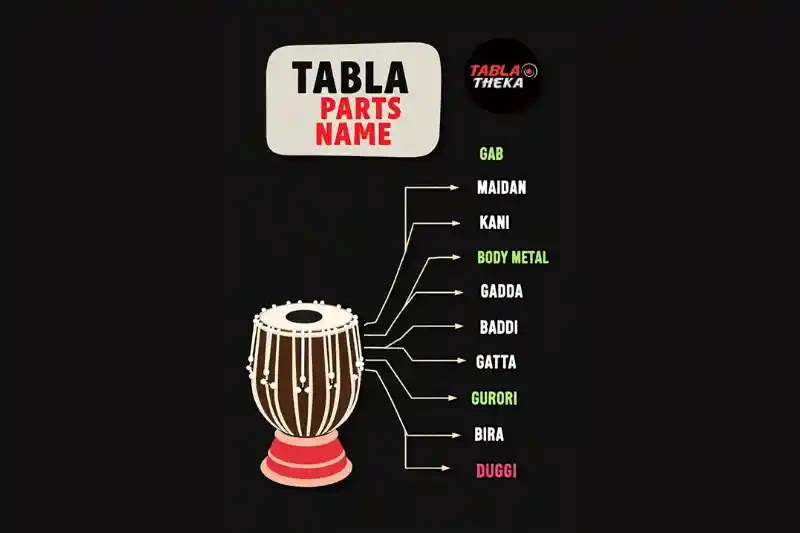
Welcome to the Tabla Theka blog, your trusted resource for learning tabla.

What is a Laggi in Dadra Taal?
A "Laggi" is a fast, playful, and catchy rhythmic composition, often played in light classical music forms like Thumri, Bhajan, and Ghazal. It serves to increase the tempo and create an exciting atmosphere. Today, we will learn two popular Laggi variations set to the 6-beat cycle of Dadra Taal, along with a concluding Tehai.
Watch a Live Demonstration of Dadra Taal Laggi
A Quick Recap of Dadra Taal
Before diving into the Laggi, let's remember the basic structure of Dadra Taal. It is a 6-beat cycle divided into two equal sections (vibhags) of three beats each.
| Beats (Matra) | 6 |
|---|---|
| Divisions (Vibhag) | 2 (with a pattern of 3|3) |
| Clap (Taali) | 1 (On the 1st beat) |
| Wave (Khali) | 1 (On the 4th beat) |
| Theka | Dha Dhin Na | Dha Tin Na |
Dadra Taal Laggi - Two Popular Variations
Here are two common Laggi patterns in Dadra Taal. We will present them separately for clarity.
Laggi - Variation 1
| 1 | 2 | 3 | 4 | 5 | 6 |
|---|---|---|---|---|---|
| Dhatete | Ketetak | Tetekete | Tatete | Ketetak | Tetekete |
| X (Sam) | 0 (Wave) | ||||
Laggi - Variation 2
| 1 | 2 | 3 | 4 | 5 | 6 |
|---|---|---|---|---|---|
| Dhatete | Getetag | Tetegate | Dhatete | Getetag | Tetegate |
| X (Sam) | 0 (Wave) | ||||
Concluding the Laggi with a Tehai
A Laggi is often concluded with a "Tehai," which is a rhythmic phrase repeated three times. Here is a beautiful 12-beat composition that functions as a Tehai, bringing the Laggi to a powerful close. Since it spans two cycles of Dadra Taal, we are presenting it in two separate tables for clarity.
Tehai Composition (First Cycle)
| 1 | 2 | 3 | 4 | 5 | 6 |
|---|---|---|---|---|---|
| Dhatete | Ketetak | Tetekete | Dha | -Dha | Tetekete |
| X (Sam) | 0 (Wave) | ||||
Tehai Composition (Second Cycle)
| 7 | 8 | 9 | 10 | 11 | 12 |
|---|---|---|---|---|---|
| Taktete | Ketedha | - | Dhatete | Ketetak | Tetekete |
| X (Sam) | 0 (Wave) | ||||
In this composition, the main body builds tension, and the entire pattern resolves with the final phrase Dhatete Ketetak Tetekete landing perfectly on beats 10, 11, and 12, leading back to the 'Sam' of the next cycle.
Conclusion: Adding Flair to Your Playing
Mastering the Dadra Taal Laggi is an excellent way to add energy and excitement to your tabla playing. Practice both variations slowly at first, focusing on the clarity of each bol. Once you are comfortable, you can integrate the Tehai for a complete and impressive performance piece.








